|
Reported by John-Peter Gernaat This talk delivered on Sunday 18 September 2022 was structured into four segments. Each segment will consider one of the reasons that Jehovah’s Witnesses present for not celebrating birthdays and offer the possibility to reflect on them and see another perspective. In this talk we hope to discover our religious, spiritual, human reason for celebrating a birthday. We will also look at how this has been expressed differently over the centuries. Birthday celebrations have pagan roots, they predate Christianity: It is difficult to know when the human being, in their culture, began marking a particular day in the span of a year, whether that culture used a lunar or a solar determination for the duration of a year, but we have early records of human cultures marking transitions in life. The transition into adulthood has been an important celebration for many early cultures. These celebrations were marked with an initiation into a new way of being within the social entity of the family, tribe or clan. The rituals in time often became religious in nature. In other words, these initiations marked a reconnection to one’s source. Thus, we know that human beings have in some way marked the passage of time in the life of the individual for a very long time. If we look at one early culture, the Sumerian culture, they marked birthdays, not by noting the position of the sun, but by recording the position of the constellations in the night sky. They recognised the Cosmic Script in the stars of the night sky and, for them, they felt that the connection of the human being to the cosmic picture could be determined in the night sky. The Sumerians identified each constellation with a particular aspect of the Divine and therefore, they thought, that being born under a particular constellation gifted qualities of that Divinity to the human being. They recognised the return of the constellations to the same pattern as that of one’s birth and celebrated that. Because the movement of the fixed stars in relation to the earth is the result of the earth revolving around the sun, the return of stellar patterns marked one complete revolution around the sun and therefore one solar year. The Sumerians recognised the cycles of time and celebrated these cycles of time. It enabled them to connect these cycles of passing time with stages in the maturity of the individual human being. Thus, the celebration of birthdays certain traces back to the Sumerian culture as does the connection to the astrological picture of one’s birth. Christianity Christianised the worldview of the time and the whole world in this sense became Christian. It its therefore not necessary to reject that which predates Christianity. Christianity used the Hellenistic worldview to understand its new way of being and in that transformed the worldview into a Christian view. We can recognise this in the writings of St Paul. He was a Greek thinker and trained in Greek philosophy. He used the training and knowledge found in Greek thought to expound the Christian understanding, thereby making it accessible to Greek thinking and Greek philosophy. Some theological historians believe that Christianity was Hellenised, but it is more appropriate to recognise that Hellenism was Christianised. The substance of Greek thinking was changed by the new experience of being human – the experience of an indwelling Christ. The Jehovah’s Witnesses recognise correctly that early Christians did not celebrate birthdays. The early Christians felt more strongly that their birth into the Christian faith overshadowed the importance of the day of their birth into the earthly world. Thus, they celebrated the day of their baptism and did so by remembering the anniversary of that day annually. The early Christian recognised that birthing is not a once-off event, but that it happens throughout our lives. It is for this reason that many people celebrate other anniversaries, such as weddings and more significantly a spiritual event such as an ordination. Anything that creates a shift in one’s life is noted and remembered in celebration in the annual cycle of time. Jehovah’s Witnesses believe that there is only one day worthy of commemoration for Christians and this is the day of the death of Jesus: Christianity does commemorate the death of Jesus; but the central celebration is the Resurrection of the Christ. That is the celebration of Easter. This is the New Birth of Jesus. Every Sunday becomes a representation of Easter Sunday; in fact, every day is Easter Sunday. Every morning when we awaken we celebrate living in the times of Resurrection. To that extent Easter is a birth and not a death. This birth was all important to early Christians. It is for this reason that the Christian Church – the Catholic Church at the time – remembered the birth of people into the spiritual world. This is especially true for the Saints. The name day for the Saints is the day of their death, or rather their birth as saints into the spiritual world. The tradition grew in Christianity to celebrate, not one’s birthday, but the day of the saint after whom one was named. Christians were given Christian names, the name of someone who had given their life to Christ. The name day was the day on which gifts were given to children, rather than on their birthday. In the traditional Christian calendar only three birthdays are recognised: the birth of Jesus (Christmas day), the birth of John the Baptist (24 June), and the birth of Mary the Mother of Jesus was given a celebratory day (8 September). The birthday of Mary in the Christian tradition is, however, not nearly as important as the day of her Assumption (Western Catholic Church) / Dormition (Eastern Orthodox Church). This was the day of Mary’s birth into the spiritual world. Thus, birthdays were significant for early Christians. Every death has a birth on the other side and every birth has a death in our memory of where we come from. This death of the memory of our origin is important because we need to establish a new connection to the spiritual world through our newly discovered conscious relationship to the spiritual world. Our connection to the spiritual world should therefore be a newfound connection and not merely a remembering. We note in Christianity the tradition of the importance of birth because birth has something to do with destiny. We are born to fulfil something that was determined before birth. Therefore, the birth is significant. There can be no Baptism in the Jordan without a birth at Christmas. They are both related to the same reality – being born onto the earth in order to be born to one’s destiny. The first celebration of the early Christian Church, besides Easter, was the Baptism in the Jordan – the birth of Christ into the being of Jesus of Nazareth. Only later did the birth of Jesus become a celebration. Thus Easter – new life in the spirit – and then the Baptism – Christ’s birth onto a human being – signify the importance of birthdays to the early Christians and also the significance of their baptism, their birth into Christianity. Every day is a birthday, a day of new birth into life on earth, until the day arrives where we are born back into the spirit. The final reason for Jehovah’s Witnesses not celebrating birthdays is that the bible does not refer to a servant of God celebrating a birthday. Two birthdays are described that have negative consequences. One is the birthday celebration that leads to the beheading of John the Baptist. However, it is important to note that the Gospels of Matthew and Luke both recognise the birth of Jesus, and Luke also the birth of John the Baptist. These births are both noted with celebration in the description in the Gospels: in Matthew the birth of Jesus is celebrated with the appearance of a Star and the Magi beginning a journey, and in Luke the birth is celebrated with the appearance of heavenly luminaries to the shepherds. The eighth day with the presentation and circumcision, the day of the birth of a boy into the Covenant of Judaism, are also recognised. The consciousness we must carry is to understand what it is that we are celebrating. This is where we go back to the ancient Sumerian picture. For them the human being born at a particular moment according to the constellations was a reflection of the cosmos. They were celebrating that here in this person, and here in that person, were tiny reflections of the great cosmic picture. We come to recognise that our birthday is also the birth of the world in us, we carry the cosmic picture in us, not just the cosmic picture of the night on which we were born, but the whole of the cosmos, the macrocosm expressed in the microcosm. We are small depictions of the great and mighty cosmic script. When celebrating a birthday, we are not so much celebrating the past, we are celebrating the future. We are celebrating the unfolding of the cosmic picture; the taking of the next step. A birthday celebrates that we are somewhere on the journey, it does not mark the end of the journey, it marks a conscious moment so that the journey can continue. That is the point of a Christian birthday, not to mark what was, it is to mark what is to come. It is to mark what can unfold because the individual has a foundation made up of the years that have passed. Birthday celebrations should not be celebrations of the past but celebrations of the future. A new cycle can begin! That is what becomes significant to celebrate a birthday as a Christian. We can take what was a non-Christian tradition and understand its desire to link to what Christianity does bring us: resurrection, new life, new beginning, new hope, new step, new stage. We are not celebrating the old, we are celebrating the new. A birthday marks possibility. It also allows us to reflect for a moment on why we are here, what it is that we still have to do, what can we do now that we could not do before, what can we do that is new, how we can overcome that which has not been working for us in our lives. We can therefore enter into a time of preparation for each celebration. We mark ways in which we recognise new ways of being. These are all births (baptism, confirmation, graduation, marriage, ordination) and it is important to mark them for ourselves. We can say: “Yes, I am on a journey, and yes, I know what it means to take new step.” That is the essence of birthdays in a Christian way, being conscious of our future. From William Wordsworth; Ode: Intimations of Immortality from Recollections of Early Childhood
0 Comments
by Lola Kirigin While the taste of the bitter-sweet funeral service lingers on, another farewell wave from the departure lounge is here given. His zest for life, with all its pleasures was not limited to his self-indulgent gourmet pallet, albeit extravagant. If his stories were exaggerated, his deeds were even more so. George’s involvement and generosity, during the building renovation work of the cottage-home which was to become his last, and where Rev. Hugh Thornton was first able to move into followed by Rev. Malcolm Allsop and Christine. The food passion and cooking style being quite labour intensive, requires much planning and preparation, increasing manifold when catering for many people. This happened repeatedly and on many varied occasions at The Christian Community, from welcoming new or visiting priests into the community, to special events and conferences, he was once addressed as the “Godfather of the African Seminary”. The signature desserts - the appearance of the Pavlova ablaze with an abundance of berries, for an evening New Year’s celebration was his customary contribution gesture of Joy. He stretched his capacities to the limits, even when he was in and out of hospitals and very debilitated with pain and in his movement. His last advent Fair and the lunch menu of “The Greek Meal” fund-raising event, were incredible. The scale of what he managed to produce, with the help of others, including his carers, no doubt, was nothing short of a miracle, when, with the additional stress of load shedding and the longest time of power cuts ruined much of the carefully prepared filo pastry delicacies. He shared afterwards, how much effort that took, and we laughed about the fact that in most Greek kitchens, as well as restaurants, there is usually a Greek grandmother hiding there, cooking from morning till night, otherwise how would it be possible to do all that, on a regular basis, without becoming a slave to the kitchen. You had to forgive the jokes in “bad-taste”. He once fibbed, that he had prepared a fish head and miso soup, for a fundraiser meal-sharing event. I naively believed him, in my eagerness to try it, only to realise he was just kidding. On another community meal-sharing event, he became annoyed with the person who, had remarked on the missing salad dressing, to accompany a meal I had prepared. After giving them a piece of “The George treatment”, that person became remarkably humbled rather than offended, which surprised me.One of his favourite movies, “Babette’s Feast” is a poignant example of what he admired and himself achieved by this art of communal cuisine and nourishment. Even though he was regarded affectionately by so many, and appeared to be gregarious, he also admitted a difficulty in fathoming people and relationships. He took solace in the more reliable world of gardening. Herbs and greens which appeared in countless community salads and the flowering plants which would not disappoint him, when carefully tended. I have one such treasure from many years ago which was given to me, by Reingard, after a particularly intensive advent fair event. This pot plant has blossomed every year since, in springtime and unfolds in full bloom at advent time. In the words of the social verse….
George, your virtues have LIVED, LOVED and continue on, in THIS COMMUNITY !
SeptemberList of articles
From the book The Nature of Substance: Spirit and Matter by Dr Hauschka LIMESTONE AND SILICA Projective geometry provides us with a mathematical illustration. One can think of the surface of a sphere as having two possible origins. The usual concept pictures it as an equal expansion from a central growth-point. Every point on the circumference thus has a static connection with the centre. This concept underlies all our building, the statics of a house, the stability of the physical universe. The alternative method of arriving at the surface of a sphere is just the opposite. Form-creating planes approach the emergent shape from infinity, becoming tangents of the sphere thus enclosed. Such spheres are therefore infinity-created hollow spaces, not solid bodies. Every point on the surface is linked with infinity, rather than with a centre (figure below). This shaping with the cosmic dynamics of infinity is the silica process, which manifests in a fixed form as the substance, silica. It is the force active wherever surfaces come into being: the surfaces of ocean waves and mountains, the epidermis of plants, the skins of man and animals, the membranes enclosing their internal organs. Silica serves as an excellent example for pointing out the difference between substances as the dead mineral end—products of a process and that process itself — a distinction we shall have to learn to make. The silica process is by no means bound to the substance silica. Only where its activity has been intense, does — material silica come into being. Substances are the final stage of processes. Future references to ‘substance processes’ are to be understood as meaning the dynamic activity preceding the emergence of physical matter. Birds are the creatures most closely related to the silica process. Material evidence of this is found in their feathers, ashes of which yield up to 77% silica. The silica process here is not limited to the feather—enclosed bird form; it is the force which relates birds to the entire sphere—shaped mantle of air that encloses the earth. Atmospheric strata arc themselves permeated by the silica process, for their surfaces were formed by its tangential planes. It is not just strength of muscle that enables the eagle to spread his wings and lord it over the heights in majestic flight: it is the profound relation of his being to the silica process active in the airy realm. Gliding is a first step in the same direction, a sport in which man has to develop a special qualitative sense for and sensitivity to the cosmic laws of atmospheric space. It is a sense that borders on perception of imponderable reality. An understanding of the silica process could contribute toward a future mastery of the air, which is structured throughout of plane-surfaces. How different a picture limestone gives! Here we find no such affinity to water as silica possesses, but rather an inclination to aridity. There is no such thing as colloidal lime. Our path to an understanding of its nature cannot therefore trace a relationship to water, as with silica, but rather a connection with dryness. Now the greatest intensification of which dryness is capable is combustion. Firing produces what we call burnt lime, but leaves silica completely unchanged. Lime in its natural state has a greediness, evident in its tendency to absorb liquids, gases and odours. Burnt lime carries this characteristic to an extreme. In the process called slaking, for example, it sucks up water with such ferocity as to cause hissings, clouds of steam and even explosions, so that it has to be very cautiously handled in the lime— pits. Slaked lime is made by pouring water on to quicklime. And though one might think this would satisfy its thirst, it goes on and greedily sucks up more carbonic acid from the air, until it becomes hardened stone again. That is why lime is an ingredient of the mortar (a mixture of sand and slaked lime) used in construction work. Burning: CaCO3 (lime) → CaO (burnt lime) + CO2 Slaking: CaO (burnt lime) + H20 → Ca(OH)2 (slaked lime) Building: Ca(OH)2 (slaked lime) + CO2 → CaCO3 (limestone) Lime is thus related by its character to the statics of building, the firmness of our physical frames, the equilibrium and stability of earthly phenomena. The image above pictures the contrast between the dynamics of the cosmic sphere and the statics of the earthly globe. The latter is built up from a central point and obeys the laws of terrestrial space, while the former is shaped by the peripheral forces of infinity. We seldom think of the extent to which as earthly beings we are bound up with the balance and stability derived from the lime-process. Gravity would drag us down into bottomless depths if the earth’s solidity and the statics of buildings were not there to counteract it and to hold things in balance. And we can thank the lime in our bones for the firm support they give to our bodies, for our balance and our upright posture. Our skin, then, is that part of us built by the cosmic silica process while our skeleton is the expression of the stable earthly minerality given us by the lime-process. With our ‘skin and bones’ we are stretched between the two polar cosmic forces, silica and lime. Silica shapes from the circumference, lime from the centre. The dynamic relationship is essentially that of circle and radius.
Sophia Turner had made the Church of Lazarus her spiritual home. It is also the place where the ashes of her late husband, Brian, are interred. Every Sunday Sophia would attend the Sunday Service for Children and then, without entering into any conversation with anyone en route, she would take a jug of water to the Yesterday, Today and Tomorrow bush planted over the ashes of Brian and she would water the bush and spend some time in contemplation.
Sophia moved to Cambridge, England, on the eve of the Covid lockdown to be near her daughters and granddaughters. When she discovered that she had cancer she took this on as part of the journey of this life, endeavouring to understand what this meant in her biography. She died well prepared and in full consciousness on Friday 8 July. It was obvious that her ashes should be interred with those of Brian in the Memorial Garden of the Church of Lazarus. Sophia's daughter Dani with her husband and two daughters arrived in South Africa on Monday 8 August. The Act of Consecration for one who has died was held on Saturday 13 August and Sophia's ashes were interred next to those of her husband and a yellow clivia now makes the place next to the Yesterday, Today and Tomorrow bush. Many people who had known Sophia, including her Latin American dance teachers, then gathered to speak about Sophia, her life and the impact she had had on others. The vase of sunflowers that adorned the tea table was sent by a friend from Windhoek who could not make it to Johannesburg for this special day. The vase itself, painted chalkboard-black, was decorated by Sophia's granddaughter. Module 1 of 2022 (5 to 7 August 2022) |
| So now I bow my knees before the Father in whom all beings in the heavens and on the earth have their birthplace and their home. May HE grant you, out of the wealth of HIS light-glory, that the higher power may take hold of you which through HIS Spirit brings to birth the Inner Human Being in you. This happens when the Christ dwells in your hearts through your faith, and when you are firmly rooted and grounded in love. Then you will also have the power, together with all who have a share in the salvation, to grasp what the secret is of length and of breadth, of height and of depth; you will comprehend the love of Christ which is greater than all comprehension, and you will be filled with all the fullness of the highest God. To HIM who can fulfil beyond all measure what we ask for or what we simply carry in our minds, in that HE lets higher forces become active in us: to HIM belongs all the glory of revelation which enlightens the community through Christ Jesus in all generations and in the ages of time to come. Amen. (This is an extract form the Jon Madsen rendition which is a translation by Emil Bock.) |
There is going to be a higher power at work in us when we are active. This higher power will not spring into action until we get ourselves going. When we cooperate with this higher power, more will happen than we could ever have even asked for or imagined. Something extraordinary happens that is not because of ourselves, but it would not have taken place without us. We must be present. The higher power in us is the “I”-organisation, the Christ-in-us. We hear it eight times in the Act of Consecration of Man: “Christ in you.” Christ is in us. We walk the path because Christ is in us. Christ is not accompanying us. Christ makes it possible that we can do ever more than we could have ever asked for or imagined. That is what it is to be a petitioning human being: I lay claim to my capacity to be human and I know that that is made possible, graced, and expanded by Christ-in-me. This changes the way that we pray and the way in which we see that our prayers are answered.
In the seasonal Gospel Reading the theme was: “ask and you will receive, seek and you will find, knock and it will be opened to you”. We should stop focussing on the ‘ask’, seek’ ‘and ‘knock’ and rather turn our attention to ‘you will receive’, ‘you will find’, and ‘it will be opened’, start working with a that as a reality, because it is real.
If we keep knocking and don’t notice that the door has been opened, we remain outside knocking. If we keep asking and do not recognise that we are receiving, we keep asking like a child. If we keep seeking and don’t realise we have it already, we never stop journeying without ever enjoying the fruits of the journey.
When we understand how we are constituted as a human being, how we are theosophy, it may change the way in which we petition. It does not mean that we don’t pray for others, but the only thing we can pray for is that they will come into the realisation that they need to come to and that they will find the grace in their lives that God will afford. There is no more we can ask for. Think of the Trinity epistle: “Our substance is his substance”. We are made of the very substance of God. It is the only thing that God can give us, the essence of His substance. With that we can experience more than we could ever do or imagine.
Solomon was anointed King by Zadok the Priest and Nathan the Prophet: Priest, Prophet and King, borne by three separate people at that time. He was given the task of making visible in the world the place that would be the Holy of Holies where the Ark of the Covenant would be kept, until this could transfer from being a place in the temple to being a place in the human constitution.
King Solomon is known for many by two stories: the story that exemplifies his wisdom when he is asked to decide who is the mother of a baby and the story of the Queen of Sheba which exemplifies his great wealth and his standing as an international figure, a cosmopolitan leader of world repute.
In the story of the baby, two unfaithful women, who each had given birth, come to see Solomon because the one woman had accidentally smothered her baby. She then claimed to be the mother of the other woman’s baby and that the other woman’s baby was the dead baby. Solomon resolves the situation by offering to cut the living baby in two with a sword so they can each have half. The true mother capitulates to save the life of her child and agrees that the baby belongs to the other woman, while the woman with the dead baby is happy to have the other child also killed. Thus, Solomon knows who the real mother is. They are unfaithful to each other and unfaithful to their grief and loss. The sword is the sword of truth. This is a story of faith rather than a story of prostitution, as these women are referred to in many translations.
King Solomon married many foreign women besides the daughter of Pharaoh. We can go to Abraham visiting Egypt with his wife Sarah and introducing Sarah as his sister who married the Pharaoh. It was the daughter of the Pharaoh who became the stepmother of Moses. The concept of the Pharaoh’s daughter is significant. It means Solomon is aligning himself with all sorts of spiritual cults. Solomon married into the family whose ancestors spiritually enslaved the Israelites and would not free them to find their path with YHWH (Yahweh of the Elohim). Solomon married women from the very nations that YHWH had commanded the Israelites not to marry – YHWH wishing to isolate the Israelites from the influences of these nations. But Solomon reaches out in order to be cosmopolitan, being an international diplomat. He created relationships with all of the tribes by marrying women from the tribes. YHWH forbade the marriages for fear that the women would take the hearts of the husbands and lead them to worshipping their gods, thus leading them away from YHWH and his mission for humanity. Solomon does build temples for his wives to worship their gods. Solomon had 700 wives of royal birth. This represents a very powerful span of time. He had picked up all of the developed nations. He also had 300 concubines. Solomon had 1000 women: ten times ten times ten. In his old age his wives led him astray to worship their gods. This is why Solomon was not the greatest king, and David remains the greatest king. David never faltered in his duty to YHWH. We might think of Solomon as a great king who goes to great lengths to incorporate the tribes of the world, building economic and political relationships with all of these tribes. He was the “bearer of peace” by name and by action. He gave his wives the complete freedom to worship their own gods. YHWH appeared twice to Solomon to instruct him to set aside his wives and their gods. On the third occasion YHWH made it clear that the choice was Solomon’s: to increase the wealth of the nations, to make peace with all others, become the centre of the known world, but that he, YHWH would take away the kingship from Solomon and give it to his servant, but only after Solomon’s death. One tribe, the Kingdom of Judah, would be given to Solomon’s son in order to protect Jerusalem which YHWH has chosen.
Solomon is referred to by seven names in Proverbs: a full span of the human being. In Anthroposophy we would consider these to be the physical, the etheric, the astral, the Ego, the Spirit Self, the Life Spirit and the Spirit Human. Solomon represented all of these as the bearer of peace. But because he builds human relationships ahead of his relationship of YHWH, he must pay the price.
The book of Proverbs is known as the wisdom of Solomon but in chapter 30 it is describes as the words of Agur, son of Jakeh king of Massa. It is another name for Solomon that represents a quality of Solomon. Then we have the words of Lemuel king of Massa. Massa is another name for the nation of Israel. The seven names of Solomon are:
- Agur is the gatherer; Solomon in his physical capacity as a gatherer.
- Jakeh is son of the devoted one, the son of devout obedience or discipline which is an etheric force in Solomon.
- Lemuel is the one consecrated to God.
- Ithiel is the one filled with God which represents the I-organisation of the human being. (Today it is no longer the presence of El but the presence of Christ.)
- Solomon is the bearer of peace.
- Kohelet is the teacher (rabbi).
- Yedidyah is the beloved of God.
These are the seven names or descriptions of Solomon which we can align with the seven-fold human being. This allows us to see Solomon as an extraordinarily great person, a wise person, a capable person who can do, organise, manage. His impression on the Queen of Sheba is beyond her wildest dreams; the descriptions she had heard of him do not do justice to what she discovered.
Solomon had the wealth and riches and the inflow of prosperity to build the temple which his father, King David, did not have and therefore YHWH forbade him building the temple.
Solomon who was more exoteric than his father David and had the capacity to build an exoteric building to house the secret, the Holy of Holies, the inner sense of the connection of the people of Israel and the great mighty spiritual being that represented God for them and was their chief angelic connection with the Divine. The building of the temple is placed in a historical context in the Scriptures. It was built in the 48th year after the Israelites had left the land of Egypt, in the 4th year of Solomons reign over Israel, in the month of Zim which is the second month. It was a temple to YHWH and was a temple of communication in which the Israelites could connect to YHWH. YHWH is an Elohim, a mighty formative force being. The building of a house in which one could communicate with this mighty being of form was quite an extradentary achievement. It was the third great creation of a sacred space.
The first was the building of Noah’s ark. This was a house that would house all of YHWH’s forms, the human, the animal; the living, moving, breathing forms until the waters subsided and all the plants, all that can be cultivated and create the space for the human being to live, had returned. This is a picture of building a sacred space, an ark, the word that in Hebrew means coffin. Noah and the animals are going through a death from one form of existence and are being born anew through the water of the flood like the waters of baptism into a new experience of life on earth. We speak of a post-diluvian world, Steiner speaks of post-Atlantean epochs and cultures. The whole world at one time was Atlantis and then it flooded and the floods subsided and a new world appeared.
Second was the Ark of the Covenant in which the Law could be placed: the holy contract with YHWH.
The contract must now live in a house in which people could gather. The house was described as three-folded. In the Hebrew of the first Book of Kings the words for the three parts of the temple of Solomon are not originally Hebrew words; they were borrowed from the Accadian language. This language was usually codified in Cuneiform and later in an Accadian script similar to the Arabic and Hebrew. It was the language of the Phoenicians. We have already looked at the parallel between the Lord of Israel and the Lord of the Phoenicians, the Lord Their God, YHWH of the Elohim – Adonai – and Adonis the lordly being of the Phoenicians.
The builder of Solomon’s temple is a Phoenician. Solomon builds a Phoenician building in its interior and exterior design. It shows the cosmopolitan nature of Solomon, and it would have been quite splendid. The building itself was much smaller than one may realise. The temple would have a looked like the chapel in a large palace complex of today, such as St George’s Chapel in Windsor Castle:
The vestibule was half as long as it was wide. The long room was twice as deep as it was wide which held the altar for the burnt offering and the seven branched candelabrum and the table with consecrated bread on either side. Then the third room with the curtain of four colours, the Holy of Holies.
From Philo to Thomas Aquinas to Martin Luther theologians have identified that the three-fold temple represented the three-fold human being. Entering the vestibule was to enter the body of the building, then entering more deeply one entered the soul realm in the Long Room and then the Holy of Holies was the spirit of the temple which represents the spirit of the human being. The form of the temples represented the form of the highest achievement of YHWH and the other Elohim in the creation of the world: the human form: body, soul and spirit.
The Temple Legend, very popular among the Rosicrucian, tells that when the Queen of Sheba came to visit Solomon the temple is in the process of being built. When she entered the temple for the first time her reaction was recorded in many writings. The most astonishing of these appears in the Qur’an. As the Queen of Sheba stepped into the temple the floor was so highly polished and the moon shining through the windows causing a reflection on the floor giving the Queen the impression that the floor was flooded, and she lifted her skirts so as not to wet them as she walked across the floor. This temple was a moon temple connected to YHWH who operates from the sphere of the Moon which is a reflection of the Sun. It was not a light in itself. YHWH is not El, he was a reflection of El to the people of Israel with an exceedingly important task. YHWH is the leading Elohim of Earth Evolution.
In the Temple Legend the Queen of Sheba also meets Hiram. She was very connected with the old ways, while Solomon was very much a descendant of Abraham with clear, brain-based thinking. He was filled with understanding and wisdom and a cosmopolitan leader, connecting with all the nations, marrying princesses from each nation, making Jerusalem a place of destination and pilgrimage. The Queen of Sheba was more connected to atavistic wisdom. When she heard of Jerusalem she was driven to visit it, rather than making a conscious decision to visit it. For her it was a knowing that this what she must do rather than a thought through process. She was taken with the design and craftsmanship Hiram was introducing to the temple and Solomon became jealous of Hiram. He believed that the Queen of Sheba considered Hiram to be more informed and developed than he was and as a result Solomon decides that Hiram’s secret must die with him and, according to the Temple Legend, not the Book on Kings, Solomon ordered the death of Hiram. In this legend Solomon was seen as being descended from the stream of Abel and Harim was descended from the stream of Cain and especially Tubal-cain. The impulse of Abel was transferred and carried by the son Seth who was born to Adam and Eve after the slaying of Abel. The Temple Legend understands something of the origins of Cain and Abel. The origin of Cain is pre-Paradise, out of a conception that belonged to before the Fall. Abel was a conception after the Fall. Therefore, there were two streams, one in touch with the arts and creativity and through human, artistic activity creating a human paradise, and the other taming and managing the earth, taking hold and cultivating the land and keeping flocks. Cain grew crops in order that the life forces would grow from the earth and the gift he brought to YHWH were all derived from the sun-forces of growth. Abel brought a gift that derived from the moon forces: the first-born of his flock and herd. Cain killed Abel. In the Temple Legend the Abel stream took revenge on the Cain stream and nothing changes. There is no restoration from the first offerings to YHWH to the House of YHWH. There is a deep division in the human experience that involves death. There is no hope of renewal, resurrection and new life.
The renewal comes through Christ. And the curtain of the temple was rent from top to bottom. It was so high that it would not have been possible to tear from top to bottom without high ladders. The tearing from top to bottom meant that the Divine world tore the curtain, opening the veil, exposing the Holy of Holies. There is no longer a hidden place out in the world, the only hidden place now resides in the human being. As a result, there is no longer a temple in the world, the temple is now in us. Our body is the temple of the Divine, the Holy Spirit, according to St Paul.
Hiram is known as the son of the widow. The reference to the son of the widow means that Hiam was a Phoenician. Adonis was born after the death of his father. In the myth of Isis and Osiris, Isis gave birth to Horus after Osiris was killed. The great gods therefore were the ‘sons of the widow’. It became an esoteric descriptor of one who had been through an initiation; an initiation, one might say, into the mindset of the gods. It gave them the ability to work like a priest. Therefore, the temple was built by a high initiate, someone who could work in the space of a priest. Solomon was king, anointed as king, but he was not priest. He was not initiated into the great wisdom of the esoteric mysteries, and he failed to build the absolute connection to YHWH, in the way David, his father had. Solomon remained entirely worldly and failed in the one aspect in which his father remained steadfast, despite his many other failings. Hiram could build the temple because he was a great initiate. In the Gospels we have the only son of the widow being carried out of the city on a bier. Therefore, we know that this young man was not dead but in a temple sleep. It may be that he was experiencing a former initiation and needed to raised from the temple sleep, which Jesus did and presented him to his mother. The initiation allowed the person to spend three days in the spiritual world in a way that would allow the person to return with knowledge that would advance humanity. They would return as a new human being.
This report represents the end of the Old Testament Study that began in November 2020. There will be further studies of aspects of the Old Testament, and these will be announced in time. They will most likely not occur again on a Saturday as it appears that a more suitable day and time needs to be considered for everyone interested in participating.
*The Temple of Solomon in Iron Age Context
Yosef Garfinkel ** and Madeleine Mumcuoglu
Institute of Archaeology, The Hebrew University of Jerusalem, 9190501 Jerusalem, Israel;
madeleine.mumcuoglu@gmail.com
** Correspondence: garfinkel@mail.huji.ac.il
Received: 24 February 2019; Accepted: 13 March 2019; Published: 15 March 2019
Article Archives
December 2022
November 2022
October 2022
September 2022
August 2022
July 2022
June 2022
May 2022
April 2022
March 2022
February 2022
January 2022
2021 - January to December
2020 - January to December
2019 - January to December
2018 - January to December
2017 - January to December
2016 - January to December
2015 - January to December
2014 - November & December
2013 - July to December
2013 - January to June
2012 - April to December
Articles (prefaced by month number)
All
01 - January
01 - The Christ-element In The Chemical-elements
02 - February
02 - January Cultural Evening
02 - The Christ-element
02 - The Mercury Cross
02 - The Salt Cross
02 - The Sulphur Cross
02 - Understanding Capital
02 - What Is New About The Movement For Religious Renewal
03 - February Cultural Evening
03 - February Discussions On The Creed
03 - February Gospel Study
03 - February Old Testament Study
03 - March
03 - Sulphur Cross - Nitrogen
04 April
04 - Deepening Our Understanding Of The Inner Working Of The Trinity
04 - Growing Point By Alfred Heidenreich - Chapter 1: Roots
04 - Ordination Weekend
04 - The Christ Element In The Chemical Elements - Carbon
04 - The Day The Sun Stood Still (Joshua 10)
04 - The Old Testament Study: The Book Of Judges
05 - Growing Point
05 - Holy Week Theme Talk
05 - May
05 - Preparation For Confirmation
05 - The Christ-element In The Chemical-elements - Hydrogen Oxygen Carbon
05 - The Old Testament Study - Samuel
06 - Biography Through Story
06 - Growing Point By Alfred Heidenreich
06 - June
06 - Kabbalah Tree Of Life
06 - Magnesia
07 - Carsten Rieger
07- Comprehending The Spirit Within – The Whitsun Theme
07 - Growing Point
07 - July
07 - St John's Weekend Events
07 - The Christ Element In The Chemical Elements - Sulphur
07 - The Gospel Study
07 - The Old Testament Study - King David
08 Alkalis And Halogens
08 - August
08 - Growing Point By Alfred Heidenreich
08 - Old Testament Study
08 - Rising Serpent To The Restful Lamb
08 - The Chakra Path – The New Way Of St John
08 - The Gospel Study
09 - Growing Point By Alfred Heidenreich
09 - Petition
09 - September
09 - The Christ Element In The Chemical Elements - Limestone And Silica
09 - The Memorial For Sophia Turner
09 - The Old Testament Study - King Solomon
09 - Theosophy
09 - Theosophy And Petition By Bridgette Siepker
09 - The Tarot
10 - Birthdays
10 - October
10 - Our “ZORBA” In Johannesburg – In Memory Of GEORGE NURSE
10 - The Christ-element In Aluminium And Phosphorus
10 - The Christ-element In The Chemical-elements Aluminium And Phosphorus
11 - Goethean Observation Of Our World
11 - Gospel Study - Luke
11 - Michaelmas Conference - Carrying The Michaelic Impulse Further
11 - November
11 - The Christ Element In The Chemical Elements - The Mineral Cross
12 - December
12 - Goethean Observation Of Our World
12 - The Gospel Study - The Gospel Of Luke
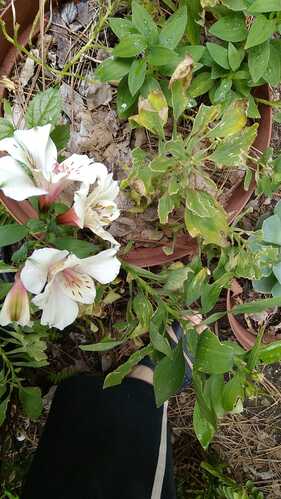
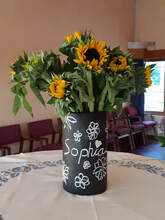
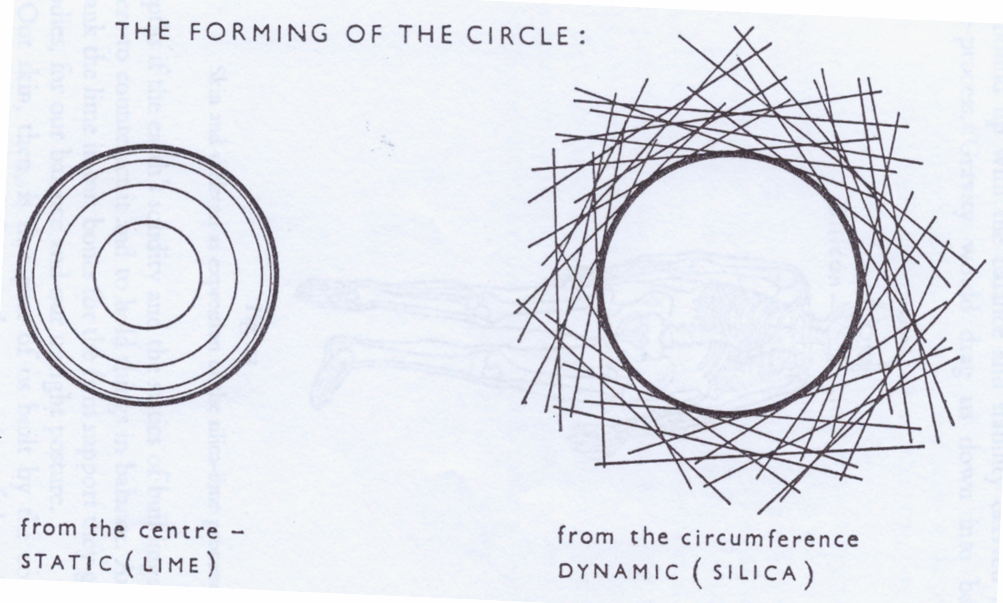
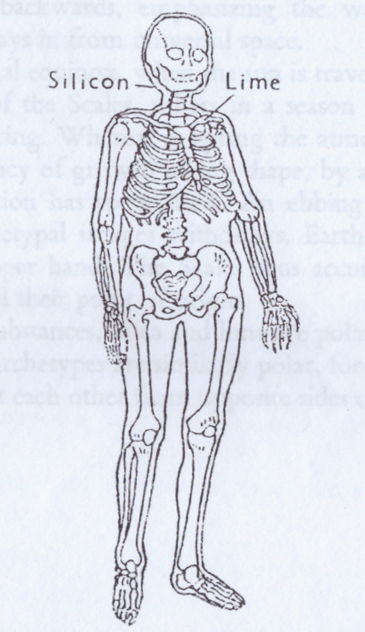
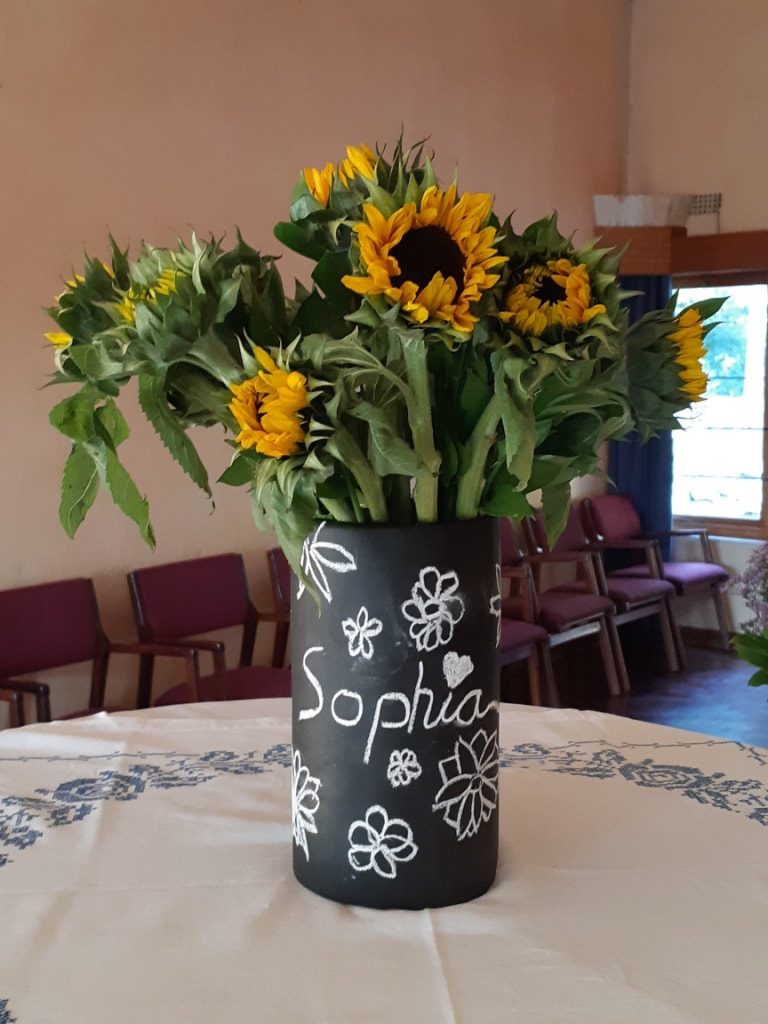
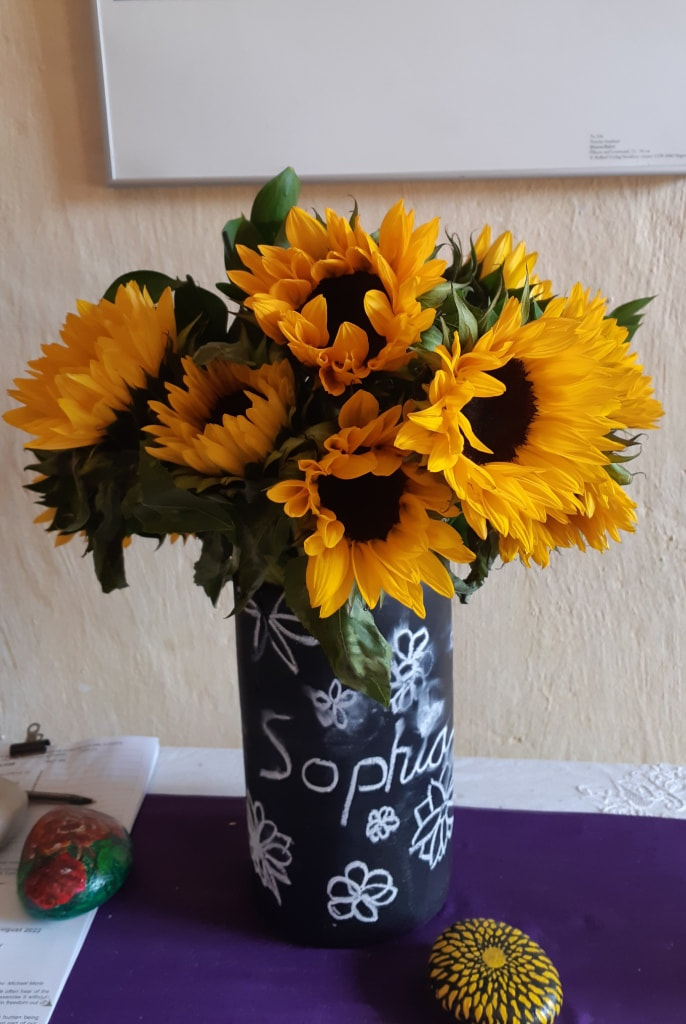
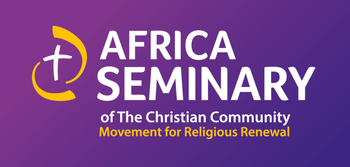
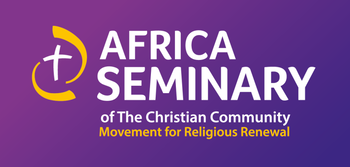


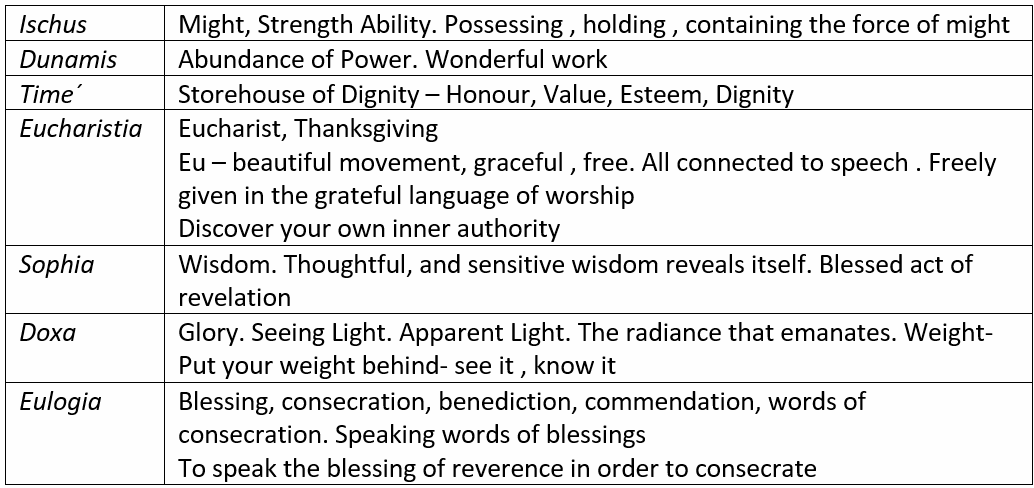
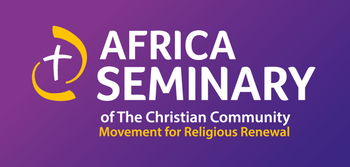
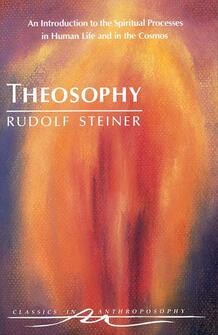

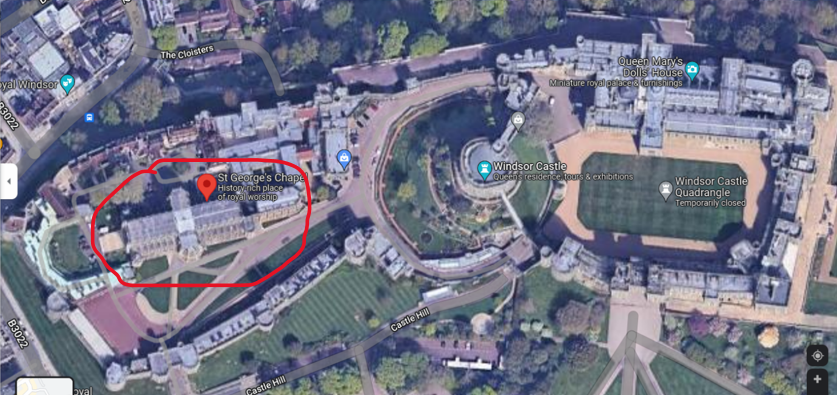
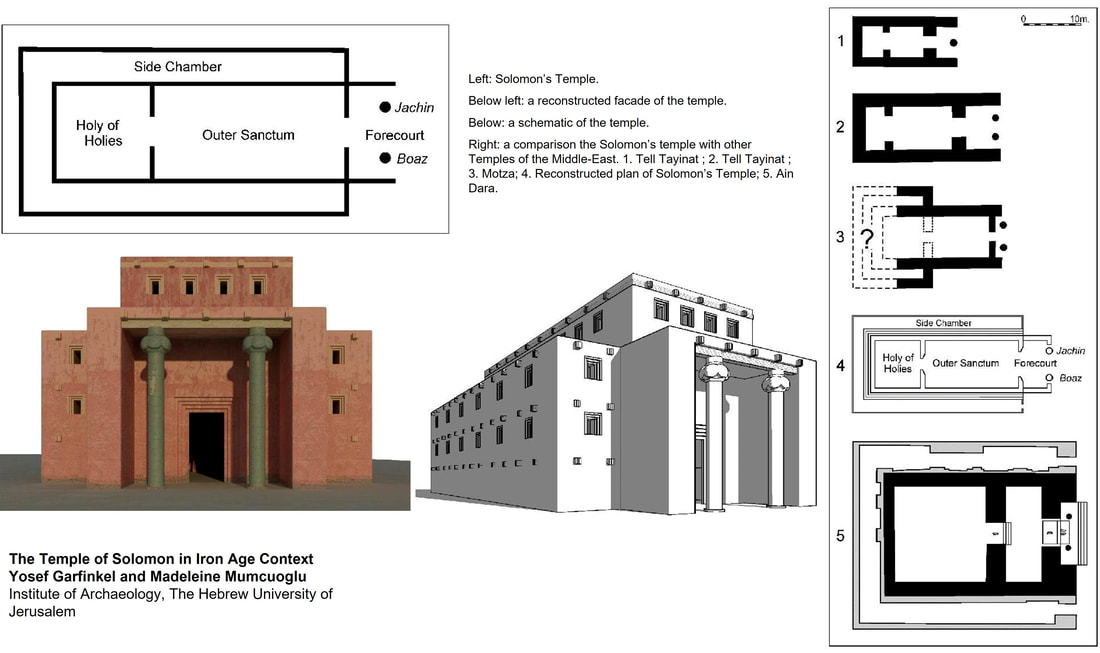

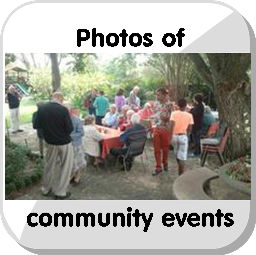
 RSS Feed
RSS Feed